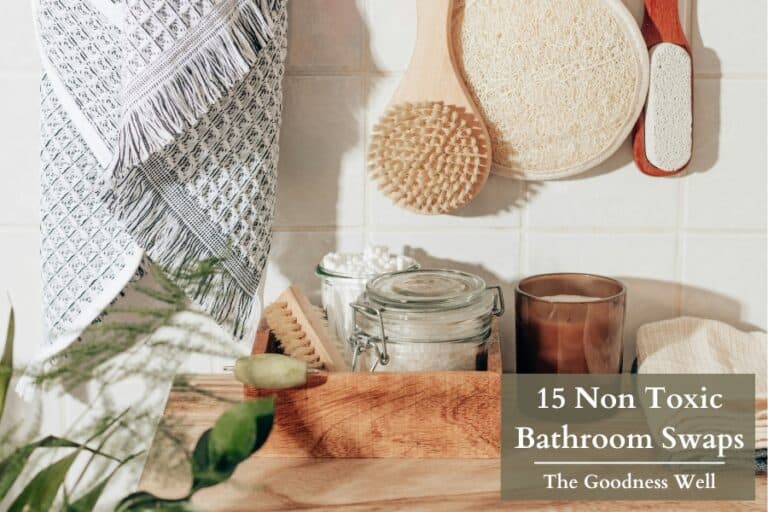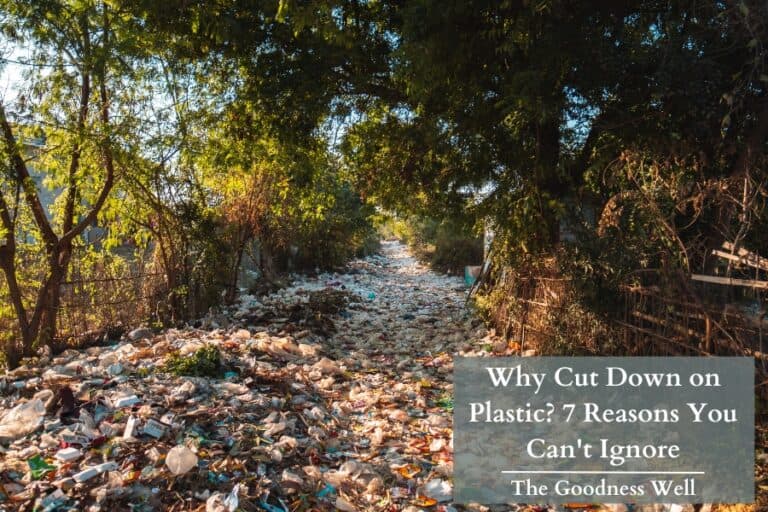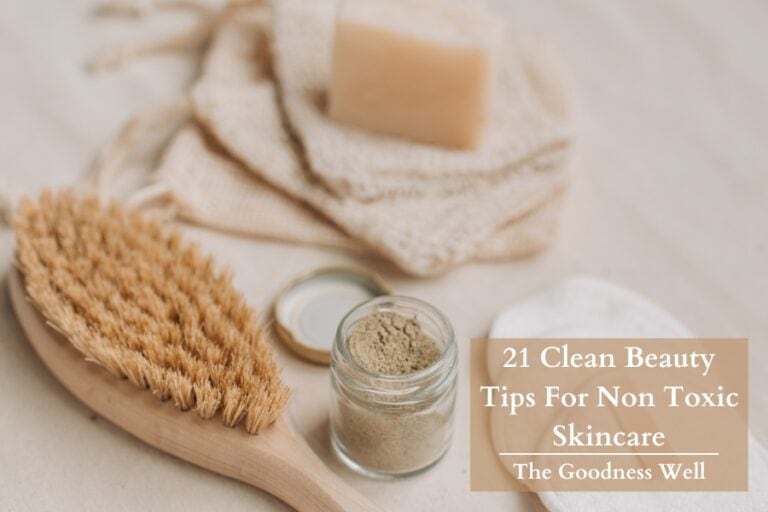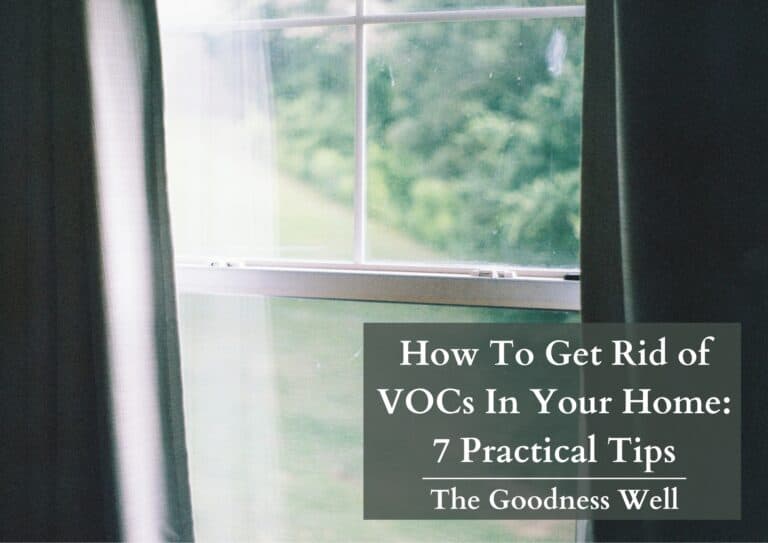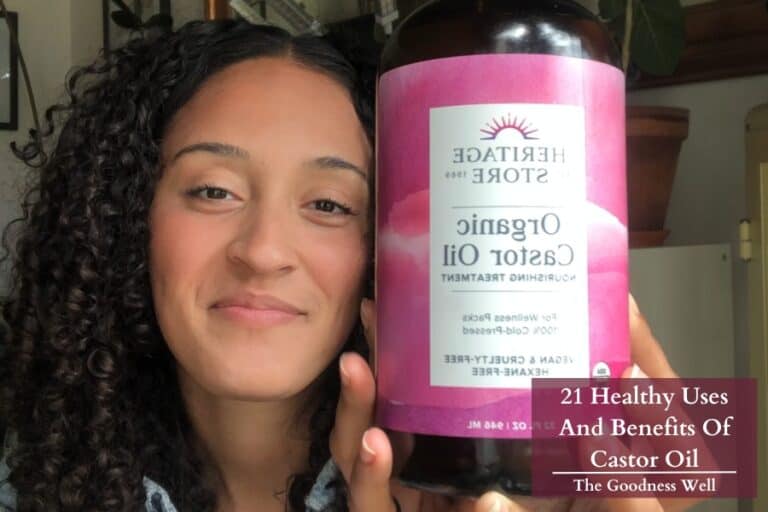21 Ways You Can Reduce Your Plastic Use
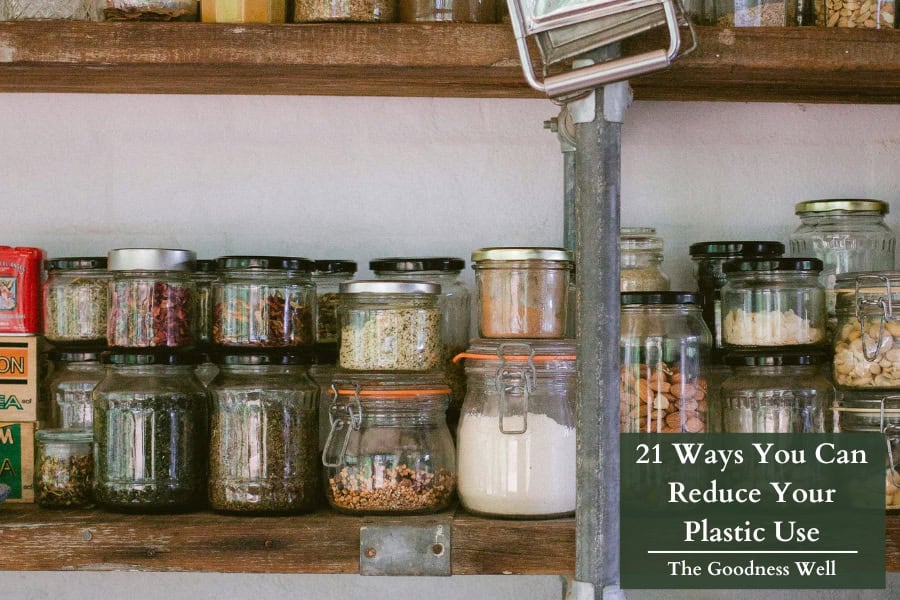
In a world where plastic reigns supreme, it can be so hard to lower your plastic use.
Single-use items are a part of our everyday life. Whether that be how our food is packaged, our cosmetic and household items, and even the very clothes we wear.
Plastic is literally everywhere.
To be exact… “The worldwide production of plastics reached a staggering 400.3 million metric tons in 2022.”…
We’ve got to stop mindlessly using and disposing of single-use products without any further thought of the consequences.
If you’re ready to lower your plastic use check out these 21 ways you can start today!
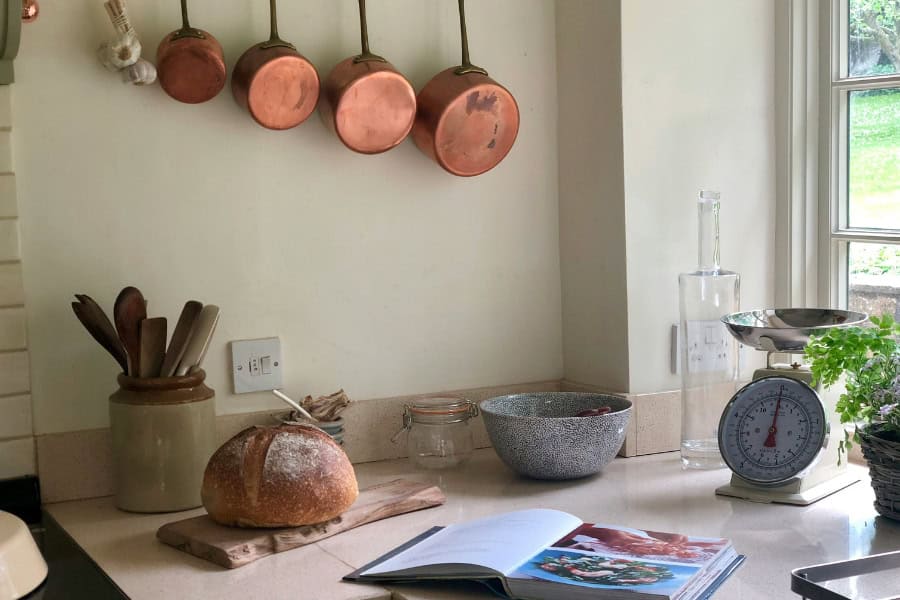
In The Kitchen
1. Let Go Of Convenience Food
Trust me I know… it’s so much easier to buy frozen chicken nuggets or a loaf of bread from the store. But when you buy those types of items whether it be premade or frozen food, you’re being plastic-wrapped and most likely highly processed food.
Cutting back on frozen and convenience foods and buying more ingredient-based items as well as whole foods and produce not wrapped in plastic
2. Start Using Reusable Coffee Filters
Attention all coffee drinkers! Switching to reusable coffee filters, made of stainless steel or natural cloth, decreases plastic use and eliminates the need for single-use paper filters.
This also drastically cuts down on the amount of microplastics in your coffee!
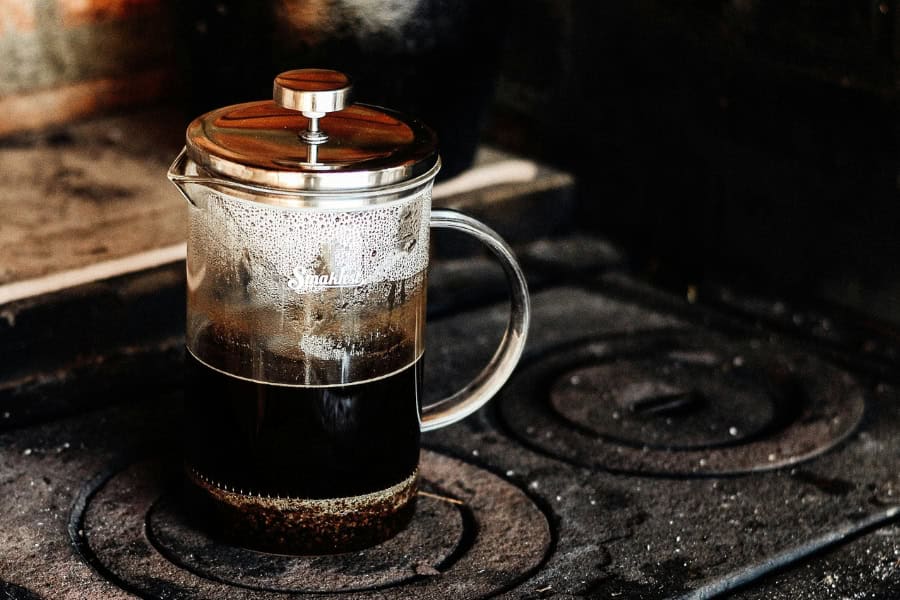
My favorite ways to make coffee are with our stainless steel percolator or with our glass French press. Just be careful some French presses have plastic lids or filters look for ones with only glass or stainless steel.
3. Wooden or Stainless Steel Utensils
One of the worst ways to use plastic is by heating it. So think about all the times you’ve heated food up in Tupperware or used a plastic spatula to flip a pancake…
But don’t worry there’s a better option, wooden or stainless steel utensils. They last long and won’t expose you to synthetic chemicals and microplastics.
4. Make Your Own Refillable Cleaning Products
Switch to refillable cleaning products that can be refilled and used again and again.
You’ll be able to reuse the same bottle multiple times, eliminating the need for single-use plastic containers.
Cleaning spray solution:
Ingredients:
- 2 cups water
- 1 squirt or tablespoon of castile soap
- ½ cup rubbing alcohol (isopropyl alcohol)
- 10-15 drops essential oil (Preferably lemongrass, eucalyptus, peppermint, or orange oils)
- Upcycled spray bottle
5. Switch To Wooden Cutting Boards
Every time you use plastic cutting boards to cut your food tiny microplastics break off getting into your food and eventually your body. Instead, choose wood or bamboo cutting boards.
6. Stop Using Single-Use Plates
I know, I know… everyone hates doing dishes. But if you’re reading this you’re probably a lot more conscious than the average person and the only thing you hate more than dishes is negatively impacting your health and the environment.
So if I’m right ditch those single-use “paper”(still coated in and contains plastic) and start using reusable plates. No, they don’t have to be glass all the time lol…
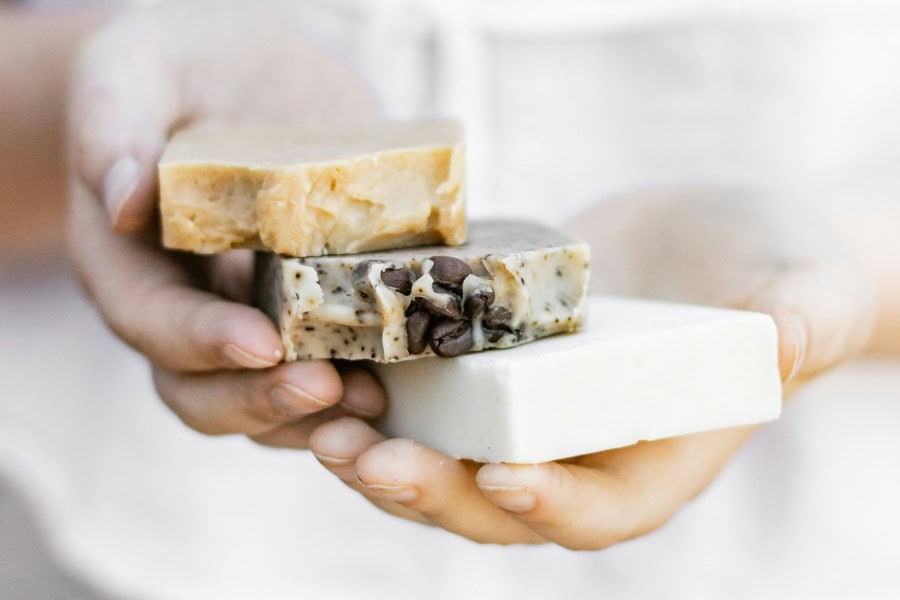
Personal Care
7. Use Bar Soaps
Swap out your nonrecyclable soap bottles for soap bars. They are super easy to find in stores or even make at home.
You eliminate any need for wrapping and can even choose bar soaps made with natural ingredients with some super great benefits.
8. Use Toothpaste Tablets
Toothpaste tables are a great option when traveling or if you’re just looking for something more sustainable.
Toothpaste tablets work just as well as your favorite toothpaste but without the need for a nonrecyclable tube. A lot of toothpaste tablets come in metal tins.
9. Use Natural Loofahs & Sea Sponge
Natural loofahs or sea sponges are great natural ways to give yourself a scrub in the shower.
Conventional loofahs are made from plastic and some are synthetically dyed. I used to use wash clothes but wash clothes aren’t as effective at removing dead skin and they can even trap bacteria.
10. Consider Using Cloth Menstrual Pads
Okay, hear me out!! There are a lot of misconceptions about cloth pads but they’re a lot better than you think!
Switching to cloth menstrual pads reduces your need for synthetic pads.
11. Stop Using Disposable Razors
Disposable razors contribute to a lot of waste that may break down but never really go away.
Instead, start using reusable metal razors with replaceable blades. Unlike disposable razors that only last you a few shaves, these razors, with proper care, can last you decades.
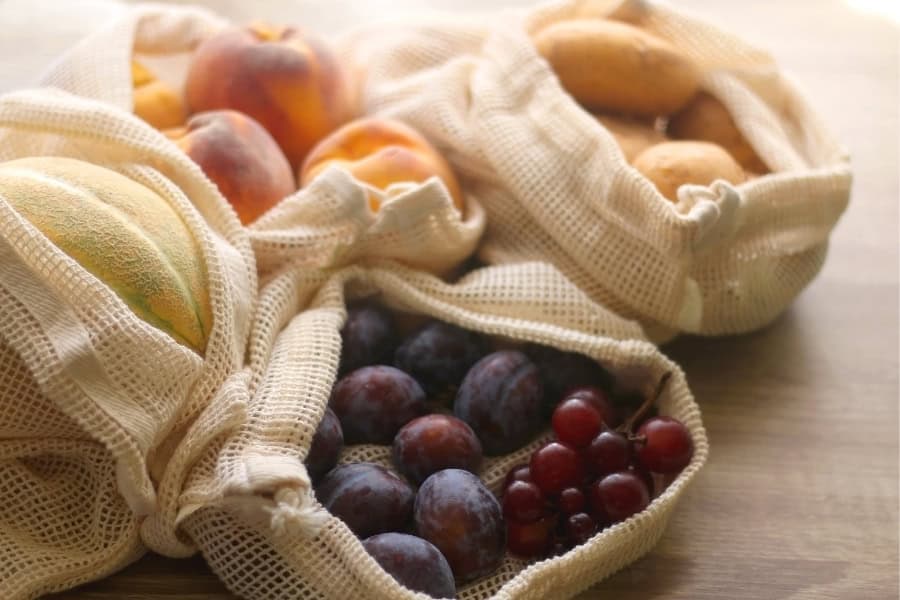
Outside The Home
12. Consider How You Pay
Whenever you’re asked if you’d like a receipt choose a digital copy that can be sent to your email or phone directly.
13. Use Reusable Bags
Using reusable bags instead of disposable bags can significantly lower your plastic use by eliminating the need for plastic grocery bags.
We all know how fast those bags can add up only to be thrown away or stuffed in a random place under the kitchen sink.
Reusable grocery bags are a great way to eliminate single-use plastic
14. Reusable Coffee Cup
Use a reusable coffee cup to reduce plastic use and eliminate the need for disposable cups.
Disposable cups contribute to a lot of single-use plastic waste but using reusable cups for on-the-go can make a huge difference.
15. Say No To Paper Receipts
Declining paper receipts reduces paper waste and indirectly lowers plastic use. Many receipts are coated with a thin layer of plastic for durability.
Choose digital receipts or opt out altogether.
16. Have Your Ice Cream On A Cone
Yes, you read that right. Next time your boo takes you out for ice cream opt for a cone instead of a disposable cup.
Simply eating ice cream out of a cone instead of a cup cuts down on waste… and let’s all be real, a cone is way better anyway. It’s a snack holding a snack!!
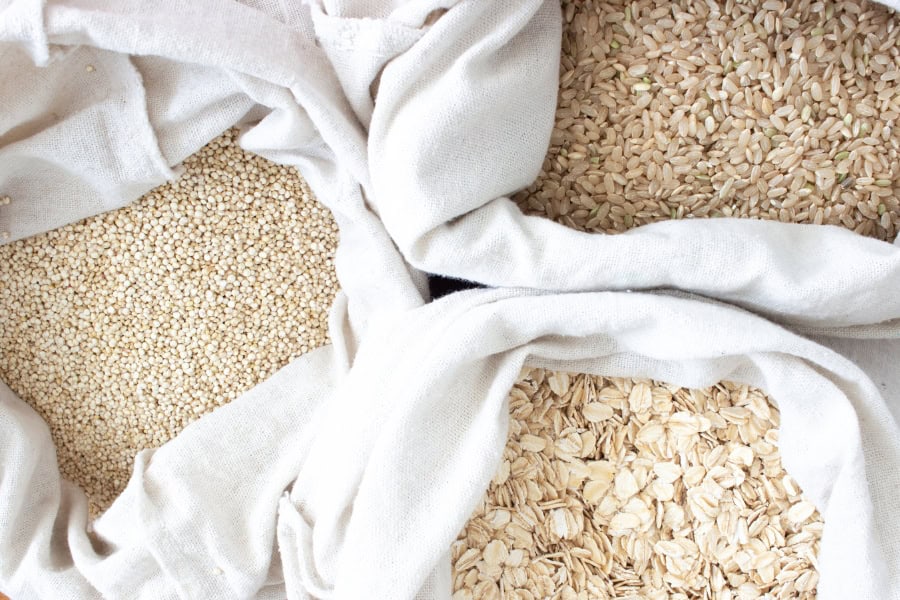
For Home
17. Buy Secondhand
Don’t be afraid to buy secondhand furniture. If you’re a little hesitant check out our guide on everything you need to know when buying secondhand furniture.
Some of my favorite things come from estate sales, thrift stores, flea markets, and garage sales. You cutdown on furniture waste and can end up with a really durable and sustainable furniture piece that’s super unique maybe even heirloom quality.
18. Stop Using Disposable Lighters
Millions of disposable lighters are thrown out every year. Instead of using disposable lighters go for metal lighters, rechargeable lighters, or match sticks.
19. Buy Products In Glass & Metal Containers
You’d be surprised how many food items that come in plastic jars or packaging are also sold in glass or metal.
For example, when we don’t make our own, we buy peanut butter in glass jars which usually isn’t much more than the plastic and we end up with a glass jar we can use for something else.
20. Choose Natural Fiber Clothing & Linens
People are so surprised when I tell them their clothes made from polyester, nylon, and other synthetic fabrics are releasing microplastics into their bodies and water systems when washed.
Instead of synthetic clothes and fabrics buy clothes made from natural materials like cotton, linen, and wool.
21. Buy in Bulk
I bet there are a few kitchen and home items that your family uses on the regular. Think about a few of those and consider buying those items in bulk.
Not only will this save you money in the long run but it’ll cut down on packaging.
We like to buy items like flour, oats, pecans, and walnuts in bulk.

Final Thoughts
While our goal is to lower our use of plastic and other synthetic materials as much as possible, there are some situations where it’s genuinely unavoidable. And that’s okay!
Being conscious about how our everyday decisions impact our health and the environment as well as educating others on how to make the same changes is what it’s all about.
Taking each step at a time towards a more healthier and natural life is what’s going to make the biggest impact.
Thanks for reading! Comment below on what you think and if you have any of your ideas on how to reduce plastic use.
Frequently Asked Questions
Start by using reusable bags, bottles, and containers. Avoid single-use plastics like straws, cutlery, and packaging.
Beeswax wraps, silicone food covers, and reusable cloth covers are great alternatives. These options are reusable and more durable.
Educate them about the environmental impact of plastic, lead by example, and make it easy by providing reusable alternatives. Try not to come off as pushy or judgemental whenever they don’t agree or have different opinions.
Cloth diapers, glass baby bottles, and wooden or cloth toys are great eco-friendly baby products.


